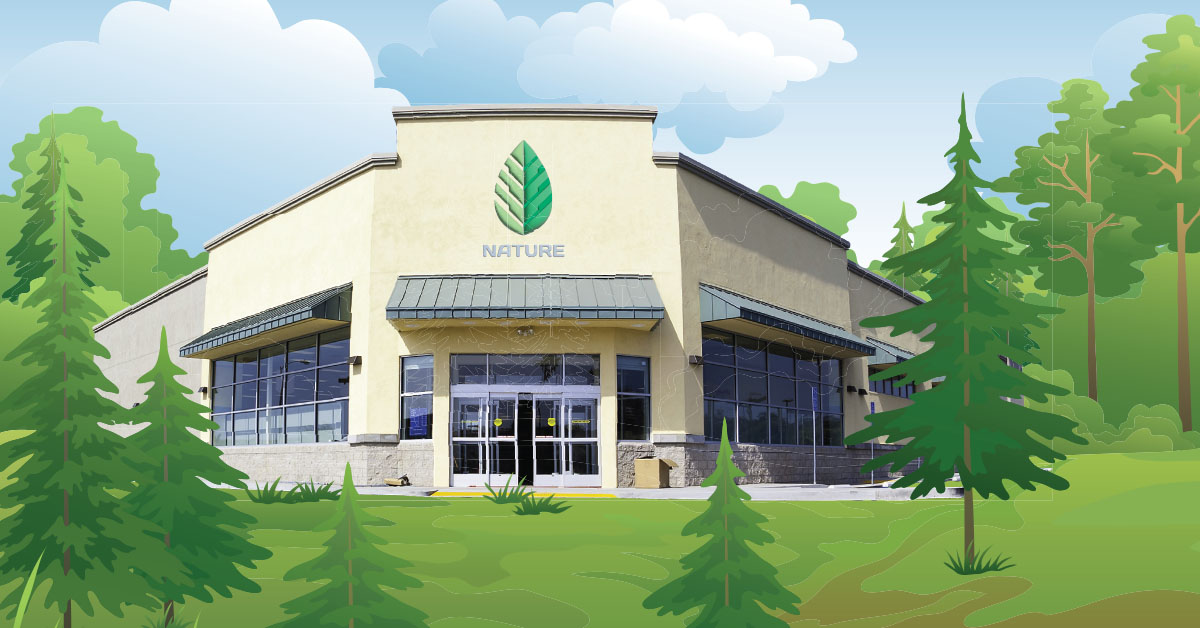When the COVID-19 pandemic struck in 2020, many thought this new crisis would divert attention away from climate matters. In fact, the opposite appears to have occurred. People, planet and profit are now firmly at the center of the risk-versus-return equation now being used to value commercial real estate assets — most notably in the retail-property sector.
Commercial mortgage lenders, brokers and investors will need to closely follow these issues. Evolving attitudes toward increased sustainability and better building practices for new and existing retail properties may affect how these assets are valued in the future.
A shifting focus among lenders and investors is apparent by the expansion of the environmental, social and governance (ESG) criteria being used to help identify socially positive commercial real estate investments. Although it is generally undefined and lacks set standards, ESG is an increasingly popular framework being used to assess how commercial real estate assets stack up when examined from broad environmental, social and governmental standpoints.
Helping to support this new valuation method is news from the United Nations’ 2020 Global Status Report for Buildings and Construction, which stated that the operation of existing buildings and the construction of new buildings accounted for 38% of carbon emissions worldwide. As such, investors are accelerating the reallocation of capital toward green investments. Research by PwC indicates that 77% of institutional investors plan to stop purchasing non-ESG properties by 2022.
According to JLL research, many global corporations and ambitious governments aim to achieve the goal of reaching net-zero greenhouse gas emissions by 2030. Net zero refers to the balance between the amount of greenhouse gases produced and the amount removed (or offset in some way) from the atmosphere. As for the commercial real estate sector, the vision is for all buildings — both new and existing — to be net zero by 2050.
Retail’s role
The growing awareness and importance of ESG among industry stakeholders means that all assets, no matter their location or type, will be impacted by long-term sustainability challenges. Retail is one of the real estate sectors facing the greatest challenges on carbon emissions. It also affords some of the greatest opportunities.
An important part of supporting value in any retail strategy is to ensure that brick-and-mortar assets have a positive social impact for stakeholders and the environment. The big challenge facing retail owners, however, is how to implement net-zero programs while remaining profitable. Shopping centers, for one, will find it extremely difficult to achieve the necessary carbon reductions and reach the goal of net-zero emissions, even with investments in state-of-the-art retrofitting.
But even with worries about building emissions, retail stores may have an environmental edge in some ways over their e-commerce rivals. Retail typically involves a physical product trading hands, leading to emissions throughout the product’s lifecycle — including manufacturing, transportation, distribution and disposal.
For building occupants focused on achieving ESG goals, reducing their carbon footprint through improvements in supply chain management and logistics is more efficient than focusing on the brick-and-mortar space. This is because the supply chain is one of the main environmental impacts of their business.
For instance, the amount of fuel used to deliver packages to individual homes is considerably more than the fuel used by consumers who drive to a retail store to buy the same item. The fuel usage by consumers is minimized, in part, because they often purchase multiple items in a single trip.
Eco-friendly obstacles
Another problem for e-commerce in its bid to be more eco-friendly is the issue of item returns. CNBC reported that between 15% and 40% of all items bought online end up being returned, increasing the carbon footprint of the delivery and pickup processes. By contrast, a physical store has lower amounts of returns and waste, with only 5% to 10% of in-store purchases being returned, according to the same report.
On top of that, many of these returned goods end up being thrown away. Logistics firm Optoro found that 5.8 billion pounds of returned items and excess inventory end up in landfills each year. While more research is necessary, an argument can be made that retail centers may provide a more energy-efficient way to sell consumer goods.
There are other additional benefits of reviewing supply chain management and logistics, including a look at bulk transport. Retail stores encourage a more efficient way for transporting products, as opposed to home delivery. Operators of outlet and discount stores find that physical retail spaces are still a highly efficient channel. From a social perspective, retail outlets also strengthen community ties.
Market opportunities
Commercial mortgage lenders should realize that as retailers continue to move away from owning real estate and are instead leasing their properties, partnerships with landlords to create the most energy-efficient stores will be a must. The property owners who do not make this a key focus for their upcoming capital investments will start to see a decline in their tenant base and, therefore, in the value of their portfolio.
Placing environmental and climate concerns at the forefront of investment decisions can save money for a company. As the minimum requirements for sustainability increase and stakeholders set ambitious, time-sensitive targets to reach net-zero and carbon-neutral operations, retail properties will need to incorporate sustainability in ways that are both revolutionary and impactful in order to remain an investable asset class.
ESG criteria can be incorporated into a retail space through its infrastructure and operations, although determining how to implement these changes can be financially challenging. Retailers and landlords will need to look for buildings that offer green certifications — such as the Leadership in Energy and Environmental Design program — which will allow them to reduce environmental impacts in brick-and-mortar retail locations.
To meet these demands, owners are increasingly incorporating eco-friendly steps such as “green leases,” which require tenants to share energy-use data and to commit to recycling materials, thus giving the landlord greater control in reducing carbon emissions. Many owners are installing electric vehicle charging stations, which not only attract shoppers who own electric vehicles but also signal a strong commitment to sustainability and the environment while reducing overall carbon emissions.
By investing in sustainability, landlords can reduce operational and tenant costs while creating a healthier environment. They can identify environmental improvements and savings to ensure their property is being used as efficiently as possible. This can include installing solar panels, collecting rainwater for use in toilets or to water indoor plants, expanding access to natural light and improving a building’s ventilation, among other things.
Property owners also can empower consumers to choose low-impact transportation options. In return, they will be able to communicate these efforts and raise awareness about the improved carbon footprint of their building.
● ● ●
Choosing to make eco-friendly upgrades to buildings can help owners and investors attract environmentally conscious clientele and become better candidates for commercial mortgages. To make these strides, there will be large capital costs that can impact the bottom line. There will be short-term pain as these improvements may not immediately add to the asset’s value, but the changes will result in long-term gains by providing protection from asset-value erosion and obsolescence.
The growing awareness and importance of ESG with stakeholders means that all commercial real estate assets, including retail, will be impacted by long-term sustainability challenges. The ability of owners to meet these challenges will influence asset valuation and will be key investment metrics as the retail sector moves toward a net-zero environment. ●
Author
-

Joseph M. Miller is a managing director at Partner Valuation Advisors and serves as national practice lead of the company’s retail valuation practice. He has more than a decade of experience and has appraised some of the most prominent commercial properties in the U.S. He was named a Retail Influencer by GlobeSt.com and is sought out as a top valuation expert.
View all posts






